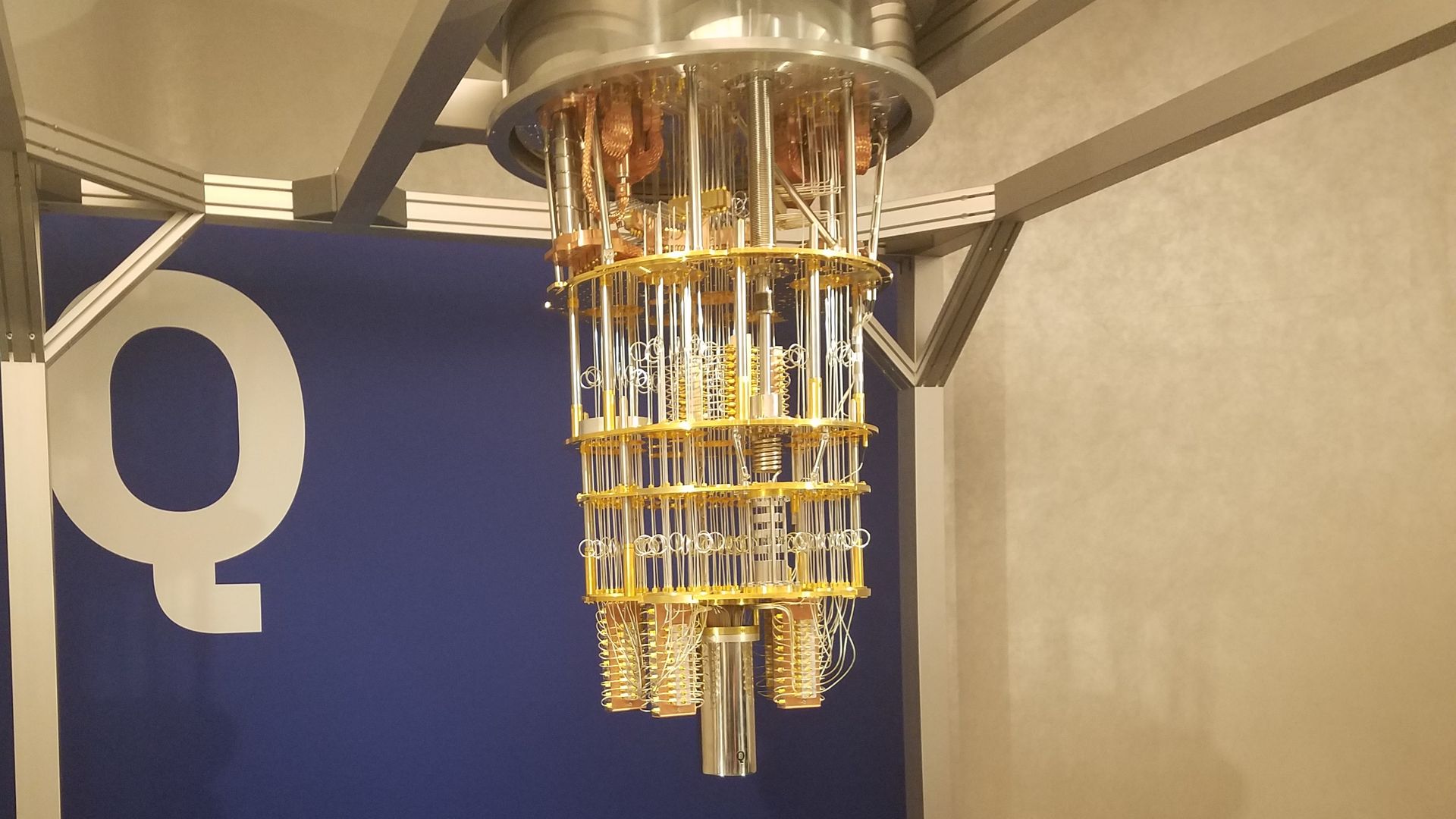Quantum computing has a problem, and it's probably not solvable: reading out the answer. It's proven terrifically difficult getting the answer out of a computation.
Quantum computing operates as electromagnetic waves of very low intensity, high intensity waves requiring a lot of additional energy to sustain them, when makes the calculation impossible. To help keep these small waves intact, even thermal motion of the atoms must be eliminated, so these "computers" are actively cooled with evaporating liquid helium under a vacuum down to milliKelvin temperatures.
Now, how small are these waves? They are the same waves that exist when electrons "wave" around an atomic nucleus in molecules. The computer is set up in such a way what only one lowest-energy wave should exist out of the many that could exist at slightly-higher energies. That lowest-energy wave is the "answer" to the computation. Move one atom out of place, and you "compute" a different answer. This is tremendously difficult computing.
That you can build a system which will produce an answer isn't so alarming, and that's not the problem. The problem is reading the answer out. We can't do it. Here's why.
In 1935 there were two "interpretations" of quantum physics: matrix mechanics (also called the Copenhagen Interpretation) of Plank and Heisenberg, and wave mechanics of Edwin Schrödinger. [Full disclosure: I'm fully on Schrödinger's side of this argument.] Einstein was leaning hard into the Copenhagen Interpretation and he and Schrödinger had a back and forth on the subject. Einstein had just published a very famous article with Rosen and Podolsky, saying that one consequence of matrix mechanics results in a paradox, the EPR Paradox: when a process generates two identical but opposite particles, which move in opposite directions, one could be measured for momentum, and the other for position, and what you know about one you would know about the other since they are identical, so you could know both the momentum and the position precisely and violate the Heisenberg principle, which you can't do.
Schrödinger's Cat is a sort of rebuttal to Einstein saying that quantum effects are not part of observable reality, so that the EPR Paradox only applies to the quantum realm and not anything we can observe. Schrödinger's Cat is a quantum event that should exist in reality. The quantum event is the random disintegration of an unstable nucleus. Since the nucleus is so very small, it is governed by quantum "laws" and not reality. But what if a detector is included to sense whether the quantum event happened, and that detector triggered something in reality, like killing a cat? (Schrödinger used cyanide gas, Einstein used an explosive.)
So after enough time has elapsed to make the odds exactly 50/50 that the cat is alive or dead, what is the state of the cat before the device is opened and inspected? The Copenhagen Interpretation says the cat exists in an intermediate state of being both alive and dead at the same time. Wave Mechanics doesn't have that uncertainty/entanglement, just the probability; it is at that moment either alive or it is dead.
Back to quantum computing: when the inputs have all arrived via microwave or optical channels, and the organization of the "computer" instantly arrives at the correct set of bits that comprise the lowest-energy answer because the waves are interacting to find the combination that has the lowest energy, how do you get the answer out? There isn't enough energy in the answer to have the qbit itself provide enough voltage or a current to amplify into a stronger and certain signal. Maybe a high-energy (wrong) answer could do that, but never the lowest-energy correct answer.
Quantum computationalists are in exactly Schrödinger's situation: they have a quantum event which is too small to show itself in reality, and they need to show it in reality. So can they build a sort of "qubit-operated Cat?" That answer seems to depend entirely on what you think happened to the cat. I think that the cat always existed in reality, and is either alive or dead, randomly chosen. Why do I say that reality was right, and not the Copenhagen Interpretation?
Wigner's Friend. Eugene Wigner in 1961, extended the thought experiment in an attempt to see what was in the box, and it's called Wigner's Friend. Wigner has a friend, and when Wigner sets up the Cat experiment, he leaves the room, and Wigner's Friend will look into the box, and will learn the state of the cat, alive or dead. But he will not tell Wigner what he saw. Wigner's Friend is now a part of the uncertainty experiment. So what would he say to the question, "Was the cat alive or dead, or was the cat in an intermediate state?" Wigner's friend will answer, every time, that the cat was alive or dead, and never that it was both. Nor would his memory of the cat suddenly change if Wigner himself looked into the box and resolved the mixed state into one or the other outcomes. The conclusion of Schrödinger's Cat and Wigner's Friend is that quantum effects are not a part of observable reality. Reality 1, quantum entanglement 0.
Quantum computing is exactly this situation, a quantum answer needs to show itself in realty, but like the cat, the answer comes out randomly.
The efforts in quantum computing, then, are to make a "quantum computer" that isn't really quantum. And it's not working out too well. Like confined fusion, it seems to be certain in a future which never arrives. A quantum computer that isn't a lowest-energy state isn't the right answer, and a correct answer at the lowest-energy state isn't readable.
I have no idea how long the charade will go, but using confined fusion as a guide, it's at least 60 years and trillions of dollars.

The IBM Q 20-bit Quantum Computer from 2019. They think it did a calculation, but
they are still working to prove the answer was right.